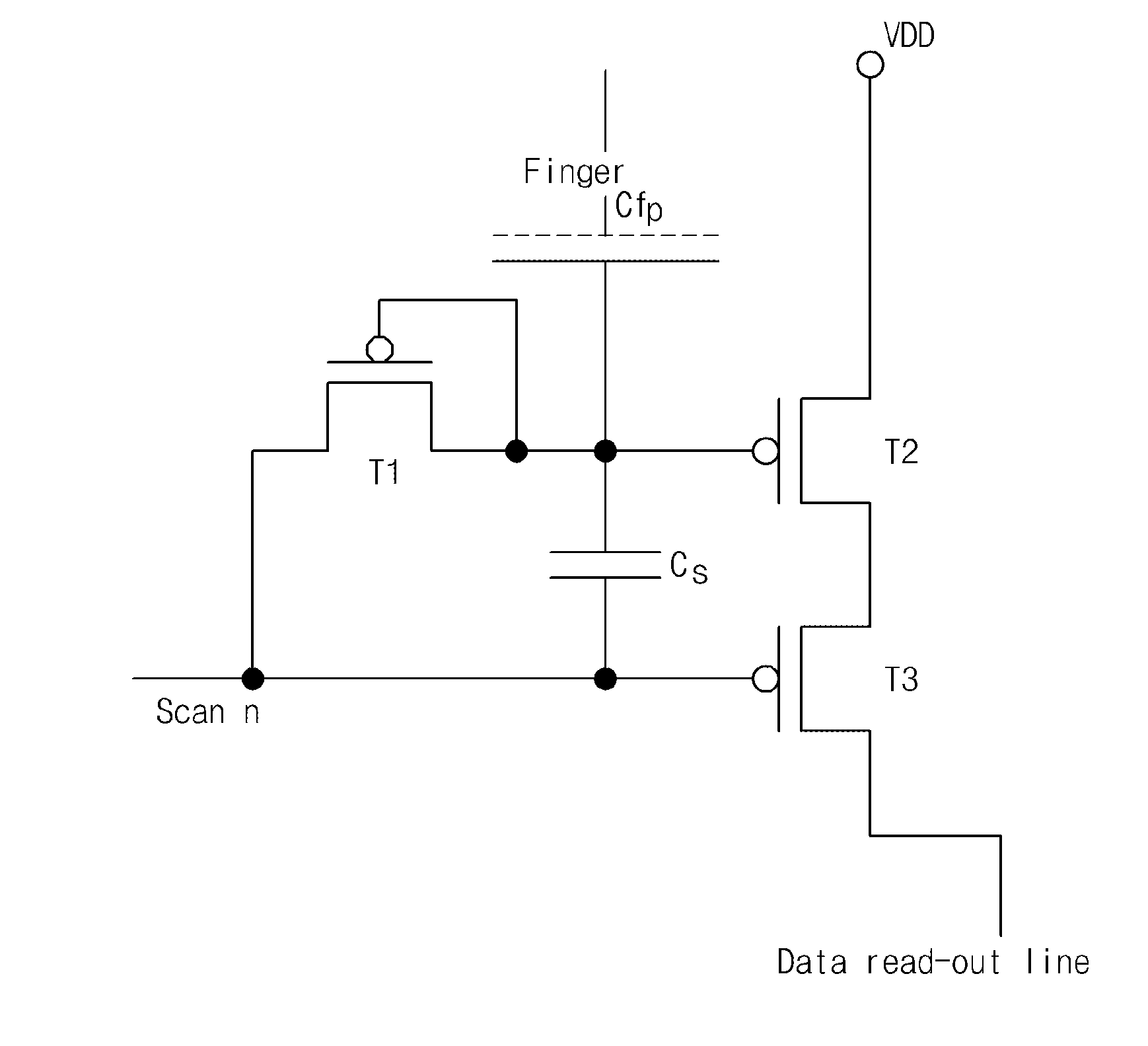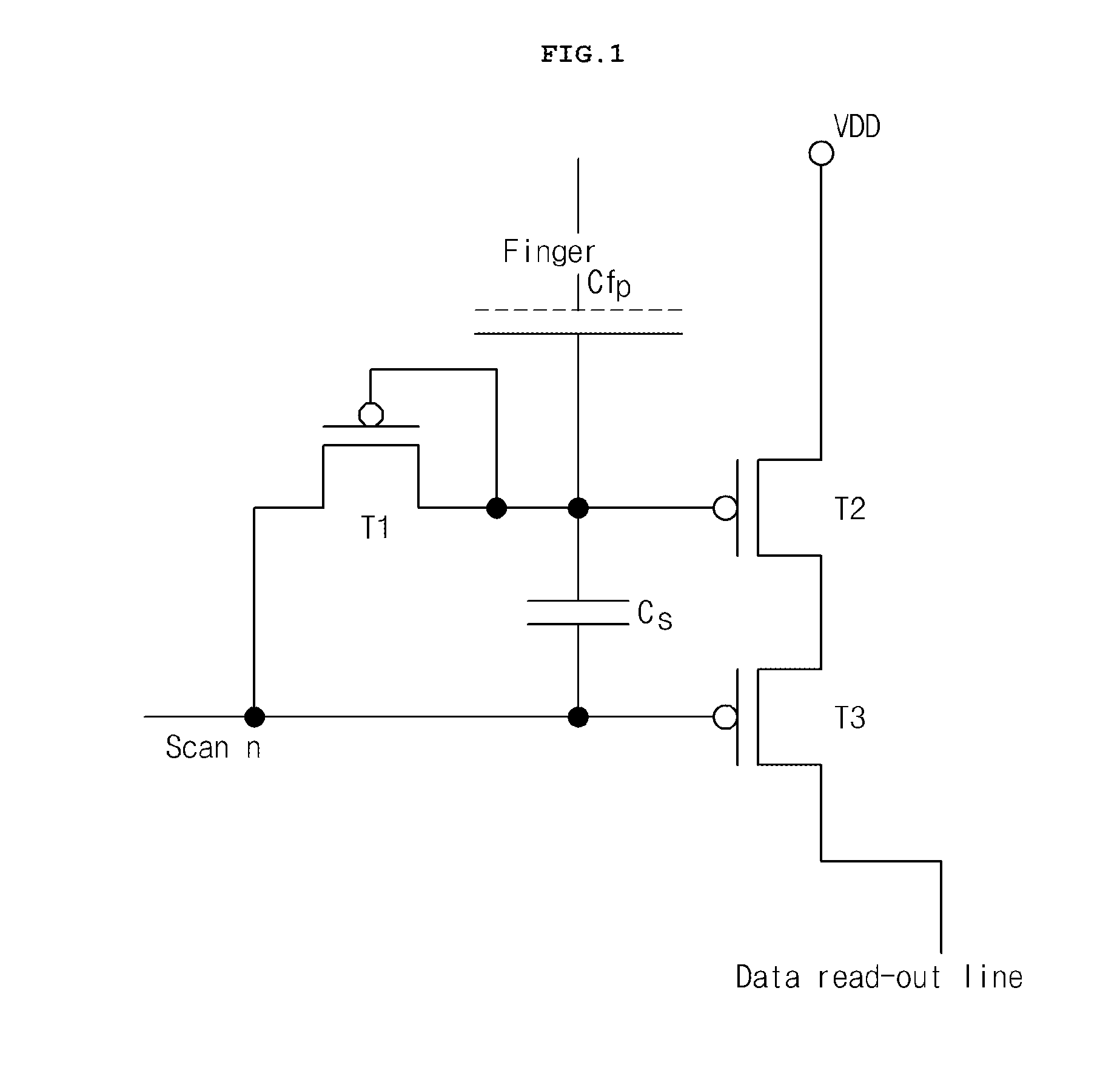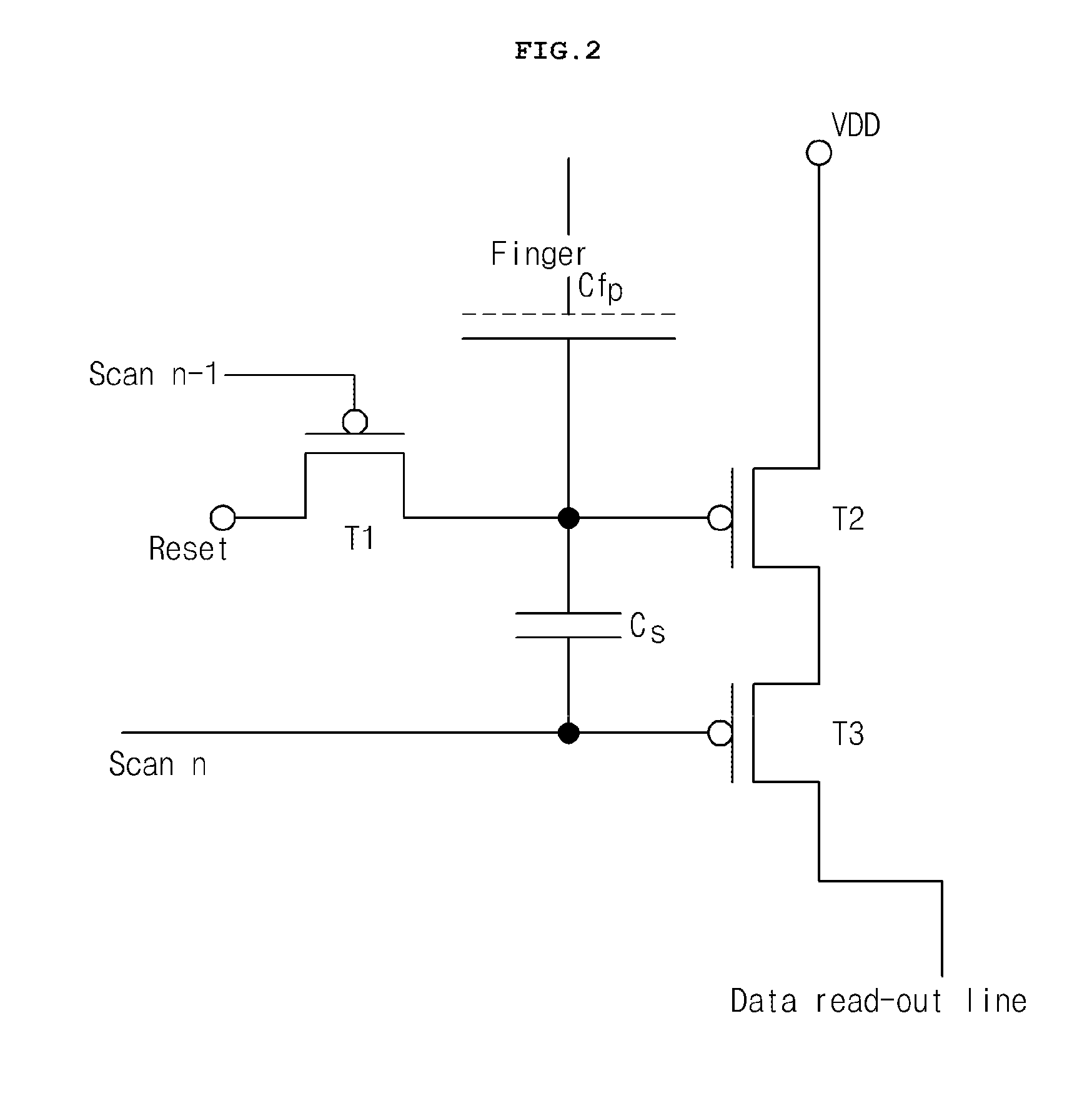Capacitive fingerprint sensor
- Summary
- Abstract
- Description
- Claims
- Application Information
AI Technical Summary
Benefits of technology
Problems solved by technology
Method used
Image
Examples
Embodiment Construction
[0048]Exemplary embodiments according to the present invention will now be described more fully hereinafter with reference to the accompanying drawings so that those having ordinary skill in the art can easily embody. This invention may, however, be embodied in different forms and should not be construed as limited to the exemplary embodiments set forth herein. To clearly explain the present invention, in the drawings, the parts which have no relation with the explanation are omitted. Like numbers refer to like elements throughout the specification.
[0049]Hereinafter, the detailed technical contents to be carried out by the present invention will be described in detail with reference to the accompanying drawings.
[0050]A capacitive fingerprint sensor according to exemplary embodiments of the present invention is characterized in that due to a difference between gate voltages of a first transistor T1 caused by a difference between fingerprint capacitances, the amount of currents flowin...
PUM
 Login to View More
Login to View More Abstract
Description
Claims
Application Information
 Login to View More
Login to View More - R&D
- Intellectual Property
- Life Sciences
- Materials
- Tech Scout
- Unparalleled Data Quality
- Higher Quality Content
- 60% Fewer Hallucinations
Browse by: Latest US Patents, China's latest patents, Technical Efficacy Thesaurus, Application Domain, Technology Topic, Popular Technical Reports.
© 2025 PatSnap. All rights reserved.Legal|Privacy policy|Modern Slavery Act Transparency Statement|Sitemap|About US| Contact US: help@patsnap.com



